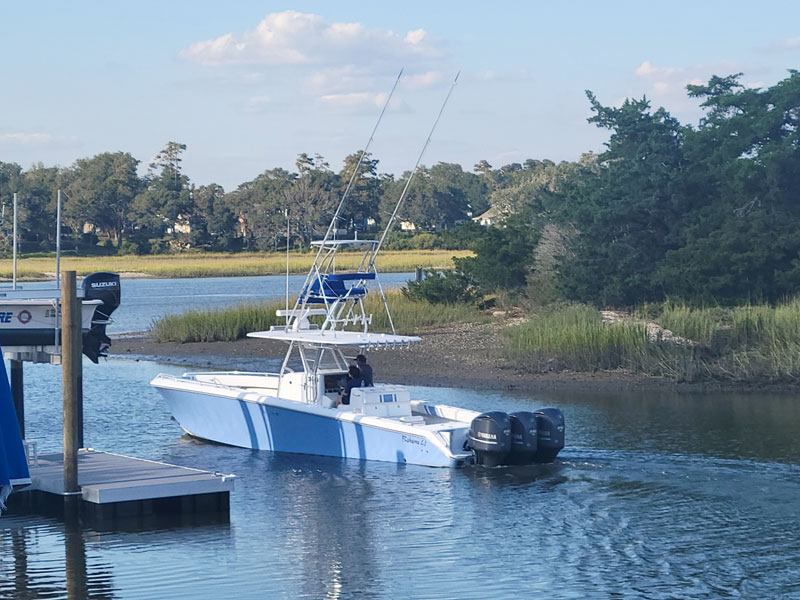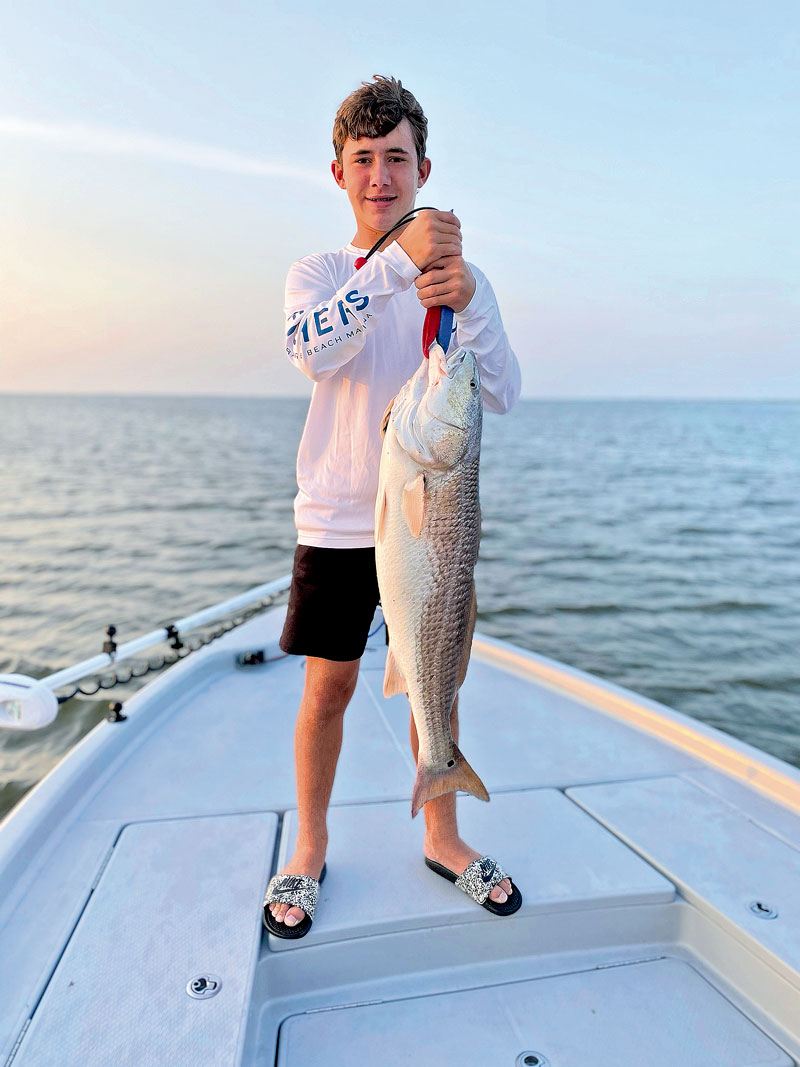
Saltwater options are typically limited this month. Trout and redfish are usually in play for inshore anglers. It’s a great month for bull reds. And there are some other options when the weather is good.
Many fishing guides point out that winter is the perfect time for some offshore fish. From yellowfin tuna and blue marlin to swordfish, you can rise to the challenge to reel in the big one.
Let’s be honest though. Many days in December don’t translate into great fishing. Often the boat is on the trailer, with the outboard already winterized. Many anglers are already dreaming of spring and starting to maintain their tackle. And there are so many other things to do around this time of the year. This is a big project month.
December also means Christmas. And no matter how old you are, you can still write a list for Santa Claus. Whether I’m deemed naughty or nice, I have one thing on my list this year, and it’s a major item. And it’s not cheap. But it’s something that would pay dividends in just about any fishery. I want a second station. That’s all I want.
Granted, I have asked Santa for this for about the last dozen years, and I still don’t have one. Maybe I’ve been naughty, who knows? In the end, I just want to be able to see.
Get vertical
Just 6 to 8 feet (or more) of heightened perspective makes a world of difference in the saltwater world. Many high-functioning charter boats along the Gulf Coast are flybridge boats for a reason.
Getting that additional height changes everything. Navigation is much safer when you can see what’s in front of you. Seeing, from up high, that rip in the water where the sandbar is offers precious time to change course and stay in the channel. Ditto for barely submerged objects.
Often, what you can see up high from a second station is completely invisible when you are at water level.
Several years ago, a fishing buddy rescued three guys whose hull had split, causing their boat to submerge in a matter of minutes. The trio had lost all electrical systems almost immediately when their boat took on water. They didn’t have time to make a distress call. Luckily, my friend saw their vessel from the second station of his 2690 Triton Express from 2 miles away. He realized quickly that something wasn’t right. He said he would have never seen them from his boat’s main helm.
Nothing beats vertical relief when it comes to fishability, for both inshore and offshore. When trolling, adding rod holders to the second station gives that few extra feet up, which drastically changes the angle of the line on your shotgun baits. This allows you to pull baits much farther back than before, without worry of tangling your long rigger baits. It makes a tremendous difference with spooky fish on slower days.
See more, catch more

You can also see debris that you would have previously trolled right past, the type of flotsam that often holds fish. Ditto that for color changes, hard edges or schools of bait. Often, you’ll see that dolphin or sailfish charge to the bait from well behind it. You can sometimes even beat the fish to the rod, skyrocketing your hookup ratio. With more baits in the water, you’ll see more, you’ll catch more. What’s not to love?
Even when closer to shore, running up and down the beach in spring looking for cobia is so much easier when you can get a bird’s eye view. Height gives you an opportunity to cast farther and more accurately. You’ll find pogies much more quickly from up top as well.
Obviously, sight casting is going to be more effective when you can see.
You can get really elaborate with a second station, adding thousands of dollars in electronics, an additional top for shade, or even a hailer system to make sure your crew hears you. All of that is nice, but not always completely necessary. What’s most important is having somewhere solid to stand, reliable steering and throttle control, and something to hang on to when things get a bit rough.
You don’t even necessarily need an existing hard top. I have seen many a functional second station made with a simple plate welded to the frame of an existing T-Top, with another frame fixed farther up the frame to accommodate steering and controls.
Admittedly, the expense of a second station isn’t for everyone. It’s kind of a niche thing. And they have drawbacks. The boat will be a bit tougher to trailer. And whoever is running it from up there loses shade and a good bit of comfort, especially when it’s rough. But if they know how to use it effectively, they will ultimately have more tricks in their bag to put more fish in the box.
I like those tradeoffs, so go ahead and sign me up. Santa, are you listening?
Add it up:
Almost all the major bay boat manufacturers are now offering second stations on their builds. They add a bit more cost to the boat, but they increase the resale value as well. And you will catch more fish with a second station.
The post “See better, catch more fish with a second station” first appeared on CarolinaSportsman.com.